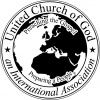More Links to David
Three miles north of Tara is an area known as Dowd’s Town. Dowd is a Hebrew name. In English we write it as David, but the Hebrew pronunciation of David is Duwd or Dowd. So right next to ancient Tara, where the line of David was established, is a town designated as the settlement of David.
Furthermore, going back to the Larne Times article: "When Jeremiah’s party arrived at Carrick that day many centuries ago they found themselves among kith and kin of the scattered people of Israel . . . Those who believe the tribes of Israel traveled to the British Isles also cite the use in Ulster of a six-pointed star . . . being a symbol of the royal line of David."
This truly is remarkable. Earlier it was mentioned that the flag of Northern Ireland had the "blood-red right hand of Ulster" upon it. What was not mentioned is that this red hand appears in the center of a six-pointed star. The star is said to represent the six counties of Ulster. Yet it is the very "Star of David"—the symbol of the Jews. Is it mere coincidence that the Red Hand of Zerah is symbolically fused with the Star of David? And atop that star on the flag is the royal crown. This seems too much to be coincidence. Indeed, it appears to be further evidence that the royal line of David married into the Milesian royal line of Zerah.
Furthermore, the Larne Times article says, "Jeremiah may have brought King David’s harp with him." The harp has long been the national emblem of Ireland. David himself, the "sweet psalmist of Israel" (2 Samuel 23:1), was a "skillful player on the harp" (1 Samuel 16:16-17)—and it is entirely possible that the harp became a symbol of his dynasty.
In 1581, Vencenzo Galilei, musician and father of the famous astronomer Galileo, published a book in which he stated regarding the harp: "This most ancient instrument was brought to us from Ireland where such are most excellently worked and in great number; the inhabitants of the said island have made this their art during the many centuries they have lived there and, moreover, it is a special undertaking of the kingdom; and they paint and engrave it in their public and private buildings and on their hill; stating as their reason for doing so that they have descended from the royal prophet David" (Dialogo della Musica Antica). Of course, this would apply more to the royal family than to the Irish as a whole—who, of primarily Danaan heritage, are mostly Danite.
Today, the harp of Ireland—the harp of David—appears on the flag of the Irish Republic and on the British royal coat of arms. Surprisingly, British royal heraldry seems to have much to tell us regarding the identity of Britain and its enduring dynasty (see Appendix 9: "The Lion and the Unicorn").
With all the evidence at our disposal, we may confidently assert that Jeremiah came to Ireland. Traveling with him was at least one of Zedekiah’s daughters. She, of the line of David, married into the Irish royal line of Zerah. Thus at last was the breach between the Perez and Zerah branches of Judah healed! And from their union would spring a dynasty continuing unbroken through the kings of Ireland, later of Scotland, and later still of all Great Britain.
Curiously, it appears that almost all of these kings were crowned upon the same "large, rough stone" mentioned earlier—which may well have been brought to Ireland by Jeremiah, as tradition maintains. Indeed, of that stone there is quite a tale to tell (again, see Appendix 7: "The Stone of Destiny"). In any case, from the time that Jeremiah arrived, the succession of Irish, Scottish and British monarchs were all members of the same dynasty—the dynasty of David.
